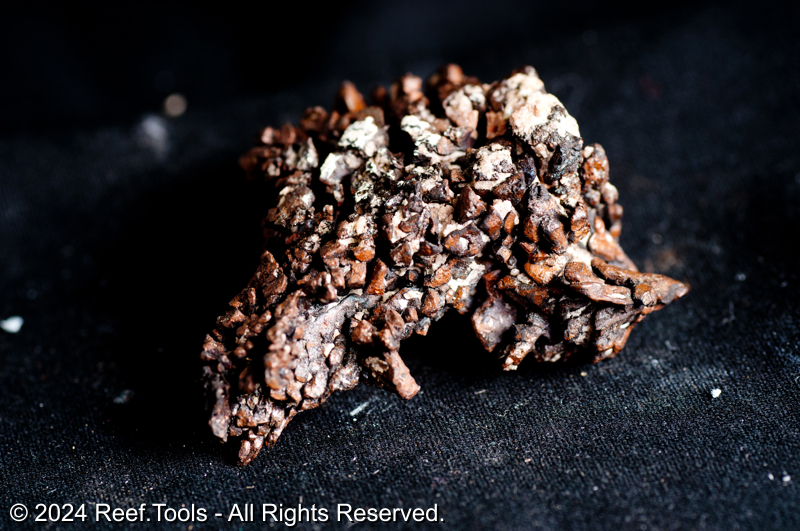Copper (Cu)
Transition Metals
Atomic Number: 29
Last Reviewed: 12/14/2024
Copper is required for coral growth, but only in trace amounts and within very tight tolerances. It plays a role in various biological processes, including enzyme function and metabolic pathways in marine organisms, such as corals.
Natural Seawater Levels
In natural seawater, copper is found at concentrations between 0.0004–0.003 mg/L (0.4–3 µg/L). These levels are sufficient to support the biological processes in corals without becoming toxic.
Risks
Copper is a double-edged sword in reef tanks:
- At concentrations slightly above natural levels (e.g., >0.01 mg/L or 10 µg/L), copper becomes toxic to corals, fish, and invertebrates.
- Elevated levels can disrupt the delicate symbiotic relationship between corals and zooxanthellae and lead to coral bleaching or death.
Relevancy
How Copper Supports Coral Growth:
- Enzymatic Activity: Copper is involved in critical enzymes like cytochrome c oxidase, which is essential for cellular respiration in corals.
- Pigment Production: Copper contributes to the synthesis of proteins and pigments, which can influence coral coloration and photosynthesis in symbiotic algae (zooxanthellae).
- Reef Ecosystem Health: Copper is necessary for the health of other organisms within the reef ecosystem, such as algae, sponges, and microorganisms, which can indirectly benefit corals.
Ocean Values
| Reference Name | Low | High | Optimal | Unit |
|---|---|---|---|---|
| Australia Ocean | 0.0200 | 0.0500 | 0.0300 | µg/L |
| Fiji Ocean | 0.2000 | 0.8000 | 0.5000 | µg/L |
| Hawaii Ocean | 0.0020 | 0.0040 | 0.0030 | µg/L |
Regional Variations
Copper concentrations can vary slightly depending on environmental factors such as proximity to industrial runoffs or natural mineral deposits. However, these variations are usually minimal in open⁻ocean water.
Dosage Recommendations
Copper supplementation in reef aquariums is not recommended unless explicitly advised by ICP analysis. Target NSW levels and monitor closely to prevent overdosing.
Handling
Testing: Frequent ICP-OES testing is recommended to monitor levels, especially when introducing new equipment or water sources.
Avoidance: Use RO/DI water to avoid copper contamination. Avoid using brass or copper fittings in plumbing.
Treatment Use: Keep copper treatments strictly in quarantine or fish-only systems.
Reef.Tools recommends: Maintain Copper (Cu) at 0.0000 µg/L.
References
"Copper in Marine Aquariums," Randy Holmes-Farley, Reefkeeping Magazine.
ICP-OES test results from major reefing brands.
Difficulty
Rating: Difficult
Copper's extreme sensitivity and potential for harm make its management challenging in mixed reef systems.
Categorization
Type: Trace Element
Role: Enzymatic Cofactor
Toxicity: High Risk
Not Usually Deficient
Copper deficiencies are rare due to its ubiquitous presence in salt mixes and trace amounts in food
Essential
It is essential for enzyme functions and oxygen transport in certain marine organisms.
Aliases
Cu, Element ₂₉, Transition Metal (family classification)
